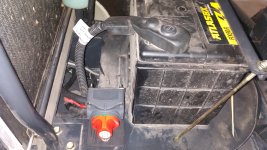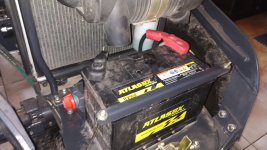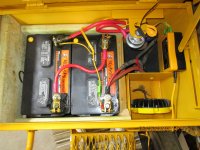BertZegers
Gold Member
- Joined
- Jan 2, 2012
- Messages
- 259
- Location
- South-West Ontario
- Tractor
- Kubota L2900, Zetor 8011, Kubota KX41Excavator, John Deere 4400 Combine, Case 1816C skidsteer
There have been a debate about if the battery disconnect switch should be in the plus or in the ground. On tractors and heavy equipment the SINGLE POLE shut off switch is mostly used, and is often put in the positive battery wire. In my opinion it is safer to put the switch in the ground wire.
The costs are the same and the work is the same.
I have an example of an electric diagram with the battery shut off switch in the plus wire, and a diagram from a tractor company with the battery shut of switch in the ground wire. It is not complicated, and we do not have to make it more complicated than need be.
Because some people have claimed that it makes no difference if the switch is in the plus or in the ground wire, I have tried to make the difference understandable in a drawing.
One note: if the battery ground wire shorts to ground before the switch, no dangerous current path is created. If a plus battery wire shorts to ground before the switch, it might start a bad fire.
Let me know what you think.
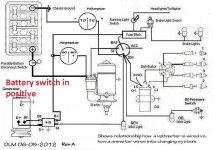
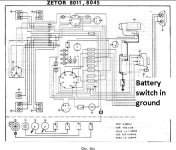
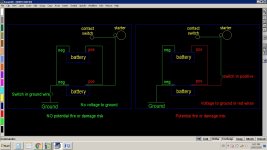
The costs are the same and the work is the same.
I have an example of an electric diagram with the battery shut off switch in the plus wire, and a diagram from a tractor company with the battery shut of switch in the ground wire. It is not complicated, and we do not have to make it more complicated than need be.
Because some people have claimed that it makes no difference if the switch is in the plus or in the ground wire, I have tried to make the difference understandable in a drawing.
One note: if the battery ground wire shorts to ground before the switch, no dangerous current path is created. If a plus battery wire shorts to ground before the switch, it might start a bad fire.
Let me know what you think.



